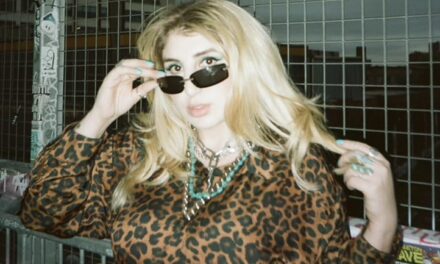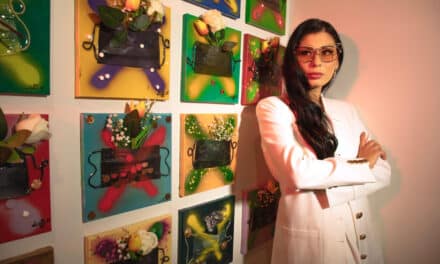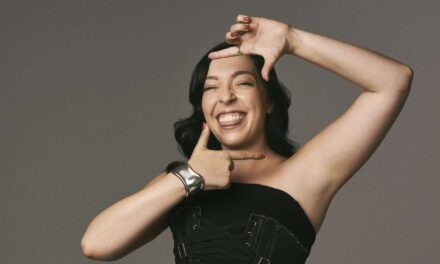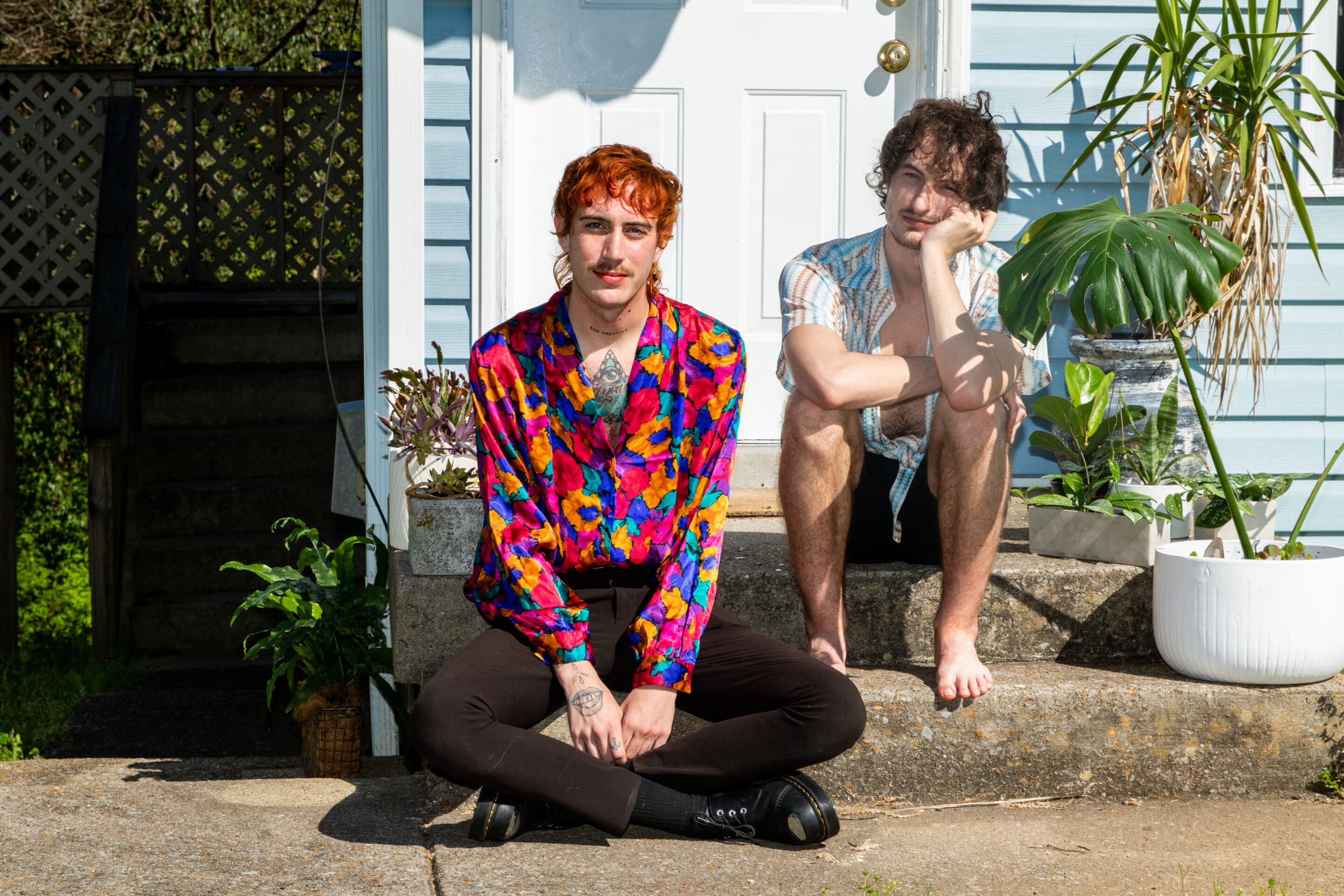In a world obsessed with the spectacular, Anthony Anzaldo is chasing the beauty of the ordinary. With the announcement of Live From An Ordinary Place—the debut full-length from his project Anthony Family, out August 1st via Pure Noise Records—he offers up something strange and refreshing: a pop album with a pulse, a palette, and a soul.
If the name sounds familiar, that’s because Anzaldo is no stranger to reinvention. Best known for his work with hardcore boundary-breakers Ceremony, he’s long operated at the intersections of punk, synth, and emotional urgency. But Anthony Family is a different proposition entirely. Where Ceremony confronts, Anthony Family seduces. It drapes its ideas in velvet, lights them with soft neon, and scores them to the echoes of Prince, Prefab Sprout, Yazoo, and a whole constellation of ’80s pop luminaries who understood that the heart is the hardest instrument to master.
But Live From An Ordinary Place isn’t some nostalgia trip. It’s the culmination of a decade of slow-burning vision—a body of work Anzaldo’s been shaping quietly, intuitively, until it finally sounded like where he is and how he is. “What do I want from this song? What does this song want from me?” he asks. The result is a record that’s as intimate as a voice memo and as cinematic as a fever dream.
To mark the album’s announcement, Anthony Family drops a double video for the gauzy, gender-blurring “Your Dress On Me” and the sultry, off-kilter “Sex in the Car.” Both songs shimmer in liminal space, exploring identity, desire, and the strange comfort of not quite belonging. “I want to dance in every room,” Anzaldo says. “I want to hear every song that colors outside the lines… I want to see your dress—on me.”
Thematically and sonically linked, “Sex in the Car” emerged as the companion piece Anzaldo didn’t know he’d been writing in tandem. “It was such a joy when I was able to finally crack that code,” he shares. “They were always meant to speak to each other.”
If that all sounds abstract, it’s because the album itself is a study in synesthesia—literally. Anzaldo describes each track by its color: “Soulless is soft teal. 101 North is bright black. Your Dress On Me is DNA burgundy. Sex In The Car; diamond yellow… Wander With Me; elderberry.” For Anzaldo, feeling and color are inseparable. “I often hear in color,” he says. “For me, that’s Ordinary.”
But make no mistake—this isn’t an ordinary debut. It’s a shapeshifting meditation on what it means to live inside your own skin and still want more. The textures span everything from glossy synth-pop to ambient guitar dreamscapes, at times evoking the art-pop precision of Caroline Polacheck or the slow-burn ache of Perfume Genius.
And at the center of it all is Anzaldo, a songwriter searching not for spectacle, but for sensation. Not for escape, but for embodiment.
As he puts it, “The process for every tune is different; getting to the destination is always different.” But Live From An Ordinary Place lands exactly where it’s meant to: somewhere between reflection and revelation, dressed in whatever color your feelings demand.
You’ve said you hear in color. So let’s start there — what color is this album as a whole? Is it the sum of its parts, or something entirely its own on the spectrum?
For me, there are 3 categories a great album can fall into:
- The absolutely cohesive mass where it’s nearly lost, and irrelevant, when one song ends and the next begins. The kind of album that needs to be heard in its entirety, every time Ala The Cure – Pornography, Nick Cave – The Boatman’s Call, Cocteau Twins – Heaven or Las Vegas
- The diverse collection, the compilation-esque album Ala The Cure – Kiss Me, Kiss Me, Kiss Me and The Beatles – White Album.
- The rare combination of both, where each song can sparkle on it’s own, but would be out of place amongst any other body of work Ala The Cure – Disintegration and Prince – Purple Rain.
I suppose I can’t be objective on whether this album is a collection of parts or exists as this monolithic, singular idea or somewhere in between. But I do hear this album in Beige’s, Soft Pinks and Pearl.
There’s something beautifully tangled in the titles “Your Dress On Me” and “Sex in the Car” — where desire, memory, and identity all seem to blur. Were these always meant to be paired, or did they find each other on their own?
I’m not sure those conclusions are mutually exclusive, but those songs were not written together. It took quite some time for me to figure out they were companion pieces, like realizing your sunglasses have been on your head while you’ve looked in every corner of your home to find them.
“I want to dance in every room. I want to see your dress… on me.” That line feels like a manifesto. What kind of freedom were you chasing — or claiming — when you wrote it?
In an effort to allow the listener to dream, I try my best not detail specifics. Which can be tough, as I do enjoy talking about myself to the right audience and to the right questioner. But there is an answer that lives in your beautiful question; claim your freedom.
The album is called Live From An Ordinary Place, but nothing about it feels “ordinary.” What is that ordinary place for you — emotionally, geographically, spiritually?
It can be easy for us to insulate, and be immersed in our little worlds. Our feelings, our experiences and our places can feel so specific to us. But as we develop more intimate relationships, experience different surroundings, listen to more stories and zoom out from our own acuteness, hopefully we begin to realize that we may not need to travel far to be relatable. Our experiences may not be so unique; and that can be beautiful.
You’ve described “Soulless” as soft teal, and “101 North” as bright black. Has synaesthesia always been part of your creative process, or did it start showing up as the music got more personal?
It’s less part of my process, and more explanatory of the result. Certain keys, tempos and lyrics live in color, but for the most part synaethesia helps me understand the music, more than it does help me create.
There’s a clear lineage here — Prefab Sprout, Yazoo, The Blue Nile — but your sound feels distinctly modern and romantic. What do you think those artists gave you permission to explore in your own work?
What a compliment! Thank you. Each of those artists are soulful and timeless. I hope they’re able to teach me the qualities of being evergreen.
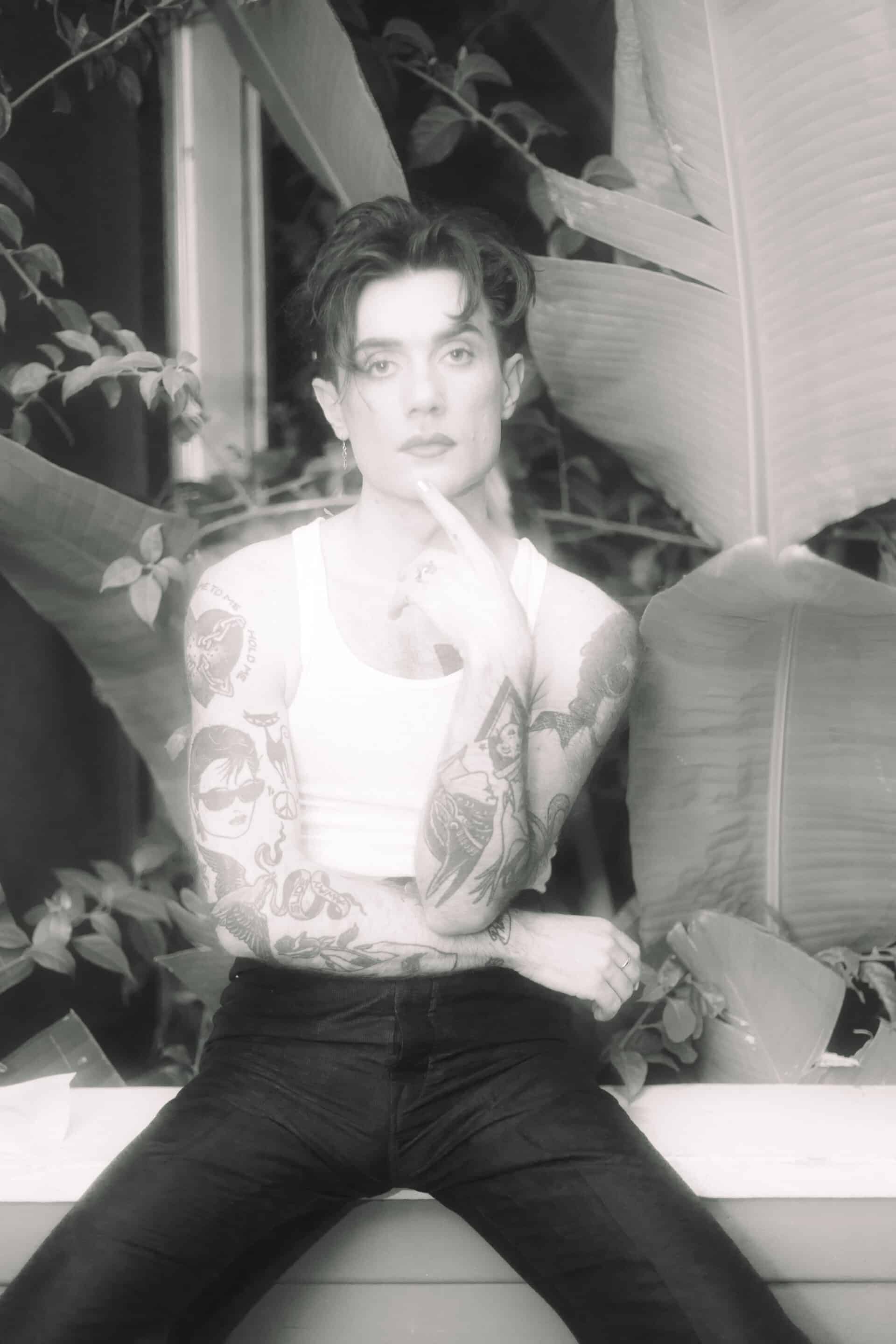
You’ve said Prince doesn’t even register as a conscious influence — it’s deeper than that. In what ways does his energy still haunt your writing room?
I think about Prince, and his music, everyday. Surely he has influenced me immensely. But I am so, utterly impressed by his musicianship, showmanship and his songwriting that his talents feel unattainable. Those mountains are too high to climb. His influence is more akin to the pouring rain, rather than the water we sip.
There’s a lot of tenderness in this record, but also a confidence in form — shifting between synth-pop, spoken word, and atmospheric ballads. How did you decide what each song needed to be, rather than what it was supposed to be?
I’m not sure I know the answer to that question. Perhaps that’s a good thing? But as long as you’re creating for you and you’re writing from an honest place, the work will be exactly what it’s supposed to be.
This album took nearly a decade to take shape. When did you know it was finally time to press record and stop rewriting the map?
When my capabilities met my ambition.
Anthony Family feels less like a solo project and more like a spiritual ensemble. Who or what lives inside that name? And what’s the invitation to listeners who want in?
We need each other. Let’s take this paisley trip through wet and warm valleys. Last year the Save The Date was delivered; ‘101 North’. On August 1st you’ll receive your formal invitation; ‘Live From An Ordinary Place’. Please RSVP.


